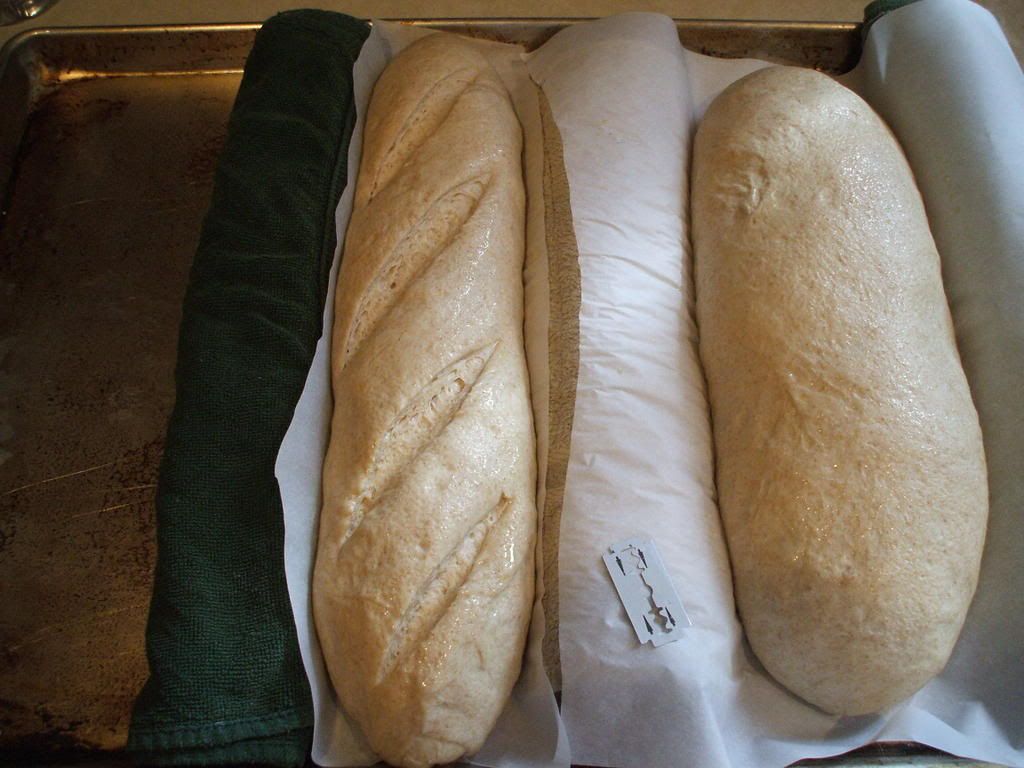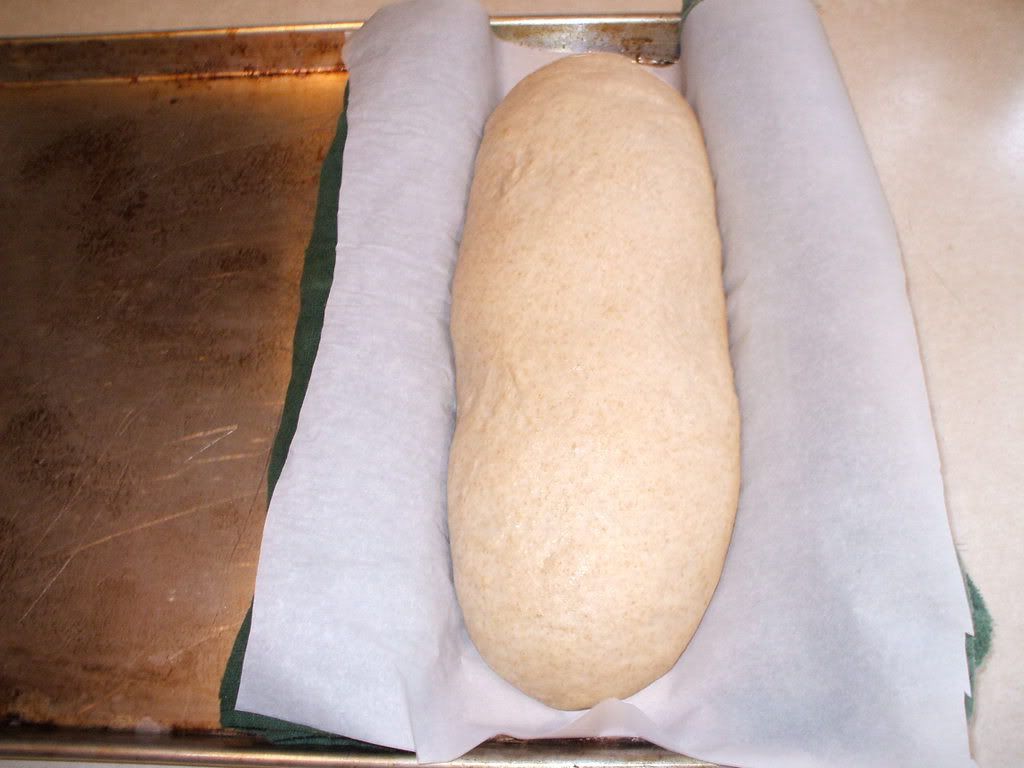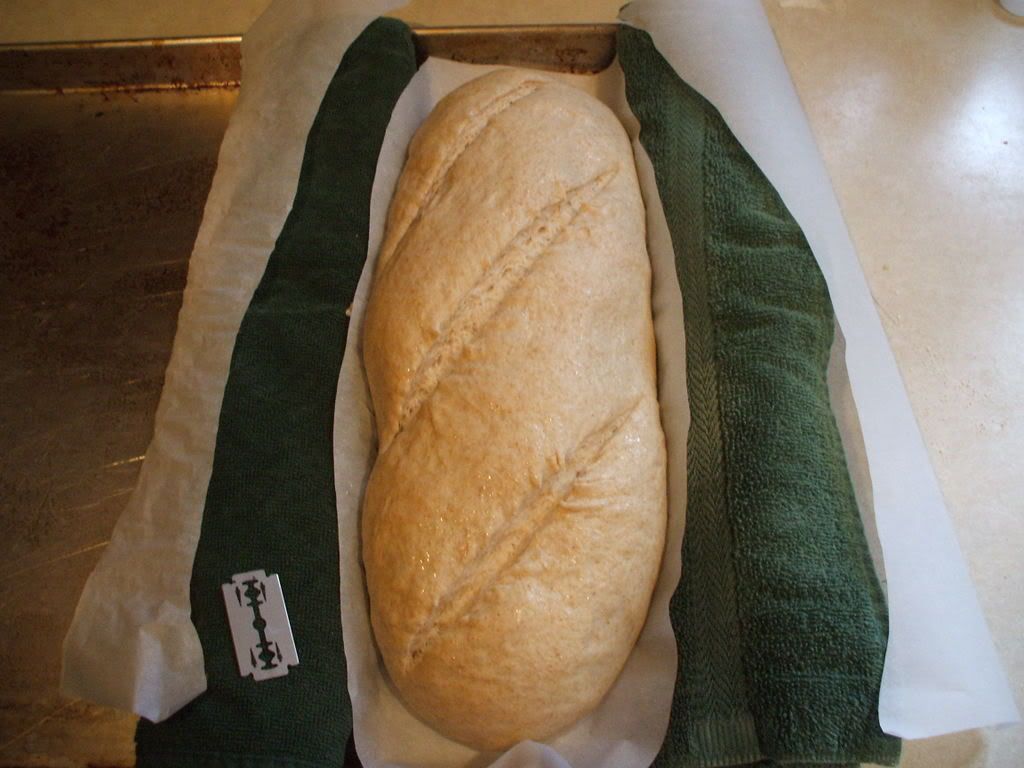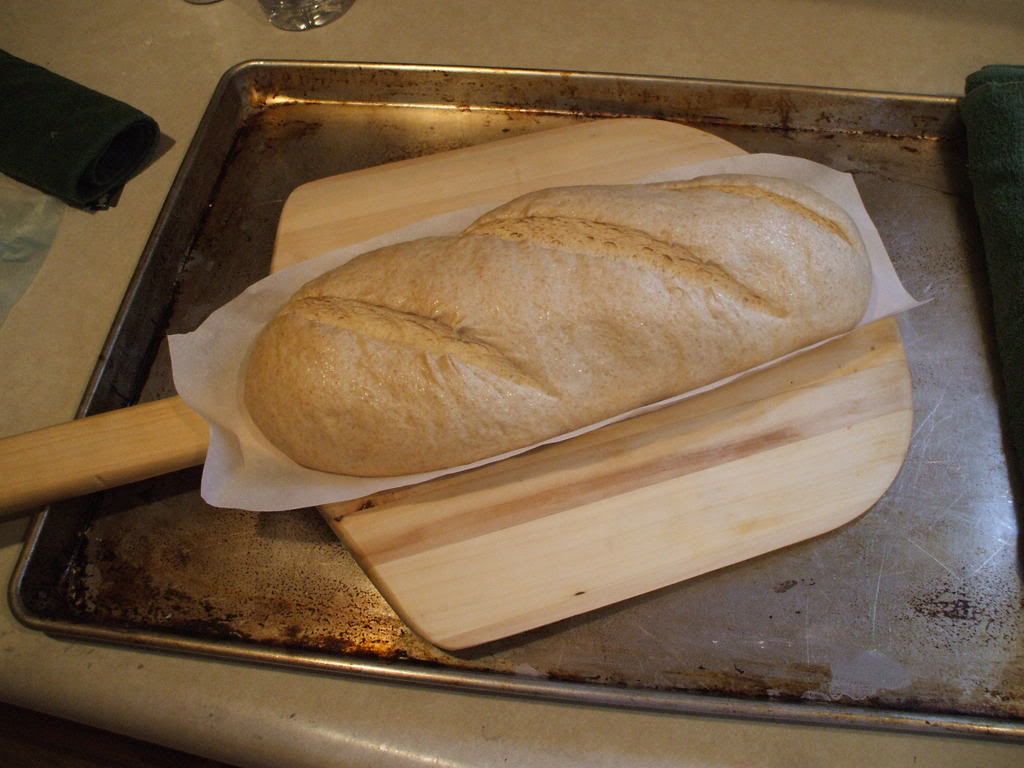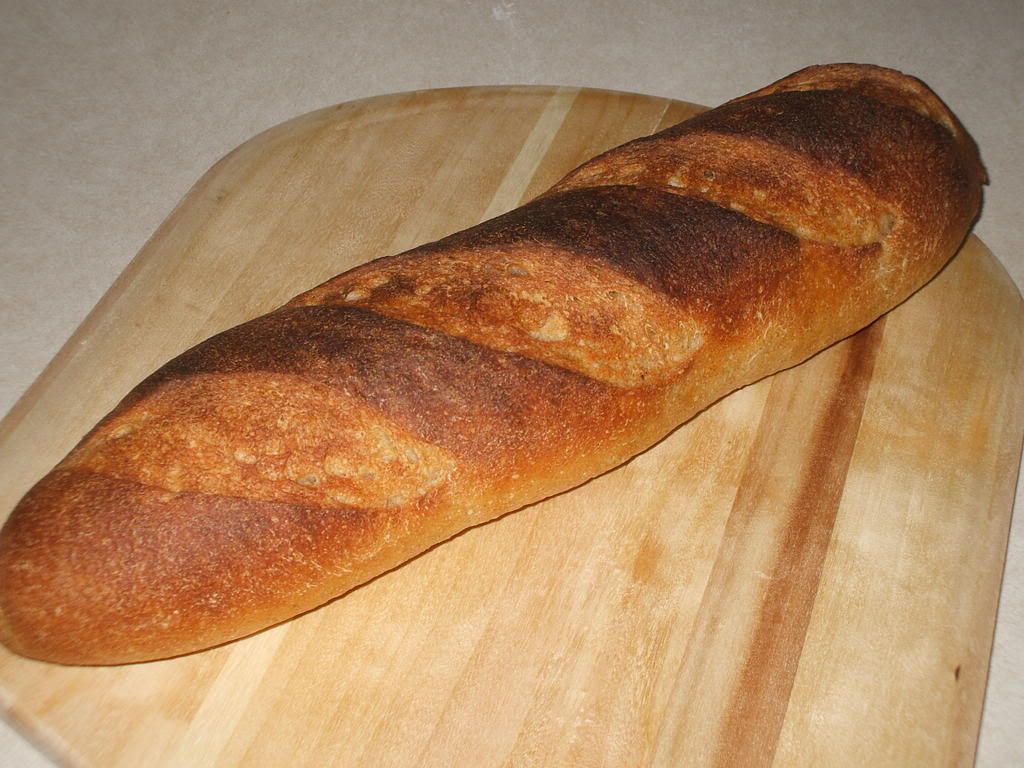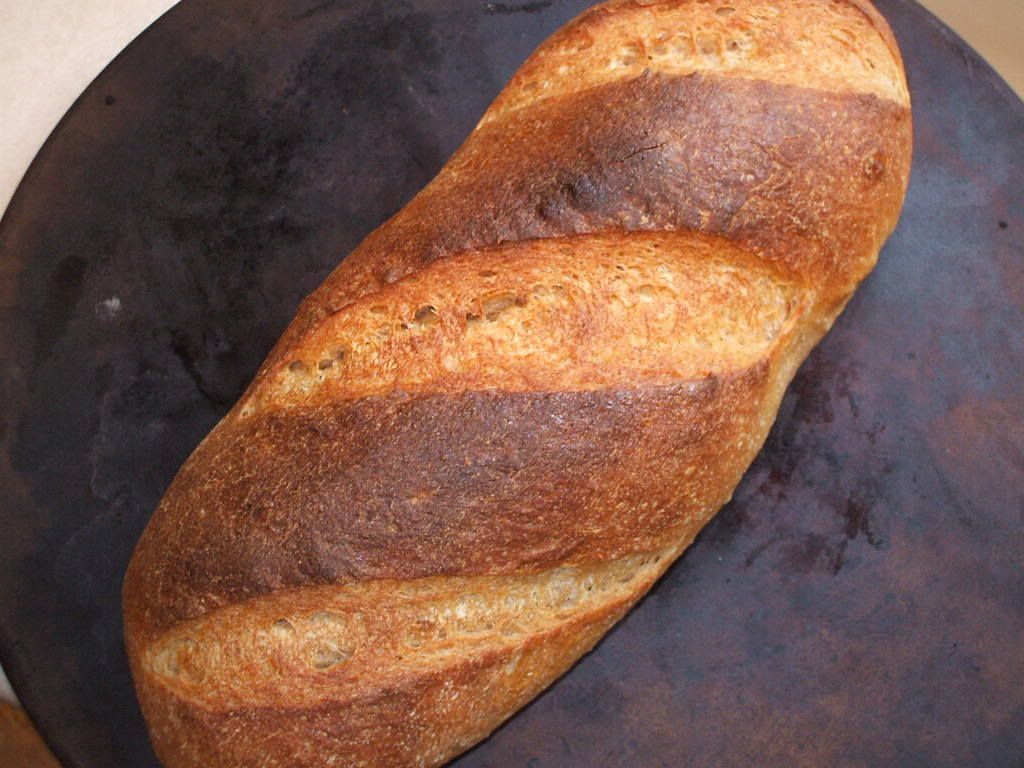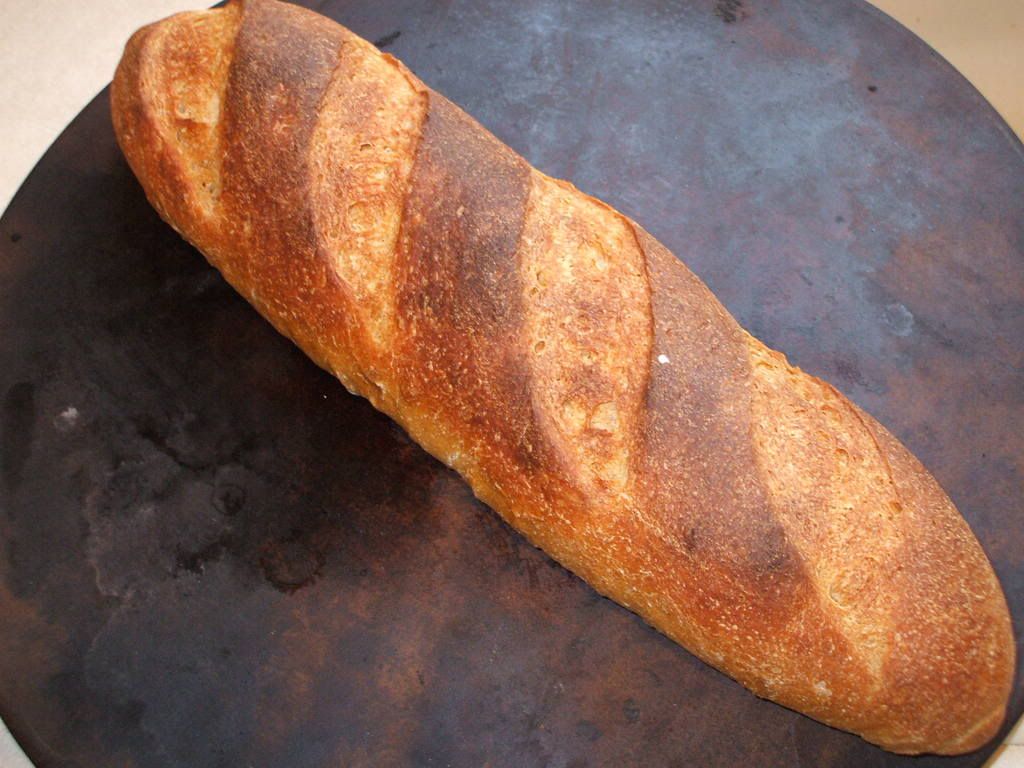
Americas Test Kitchen Grilled Pizza
I spent a few months looking for a good grilled pizza recipe awhile back. I eventually stumbled upon a version by Americas Test Kitchen, which actually turned out pretty darn good. It took me awhile to convince my wife and kids that I could make a pizza on my gas grill, but that didn't stop them from eating it. :) Actually, everybody I've mentioned it to is skeptical about it. Not sure if they doubt my skills or the concept in general. It's a fairly straight forward recipe, but there are a couple things that can easily be modified for your tastes. I really enjoyed the spicy garlic sauce, but everybody else in my home limits there spicy foods to ketchup.
I have done some whole wheat in it as well, and it wasn't bad. Once I get a chance to get a working starter, I plan to play with a sourdough version of it and see what happens.
And after tonight, I have to test out the Neo-Neopolitin dough from the Pizza Primer of Floyd's. That dough was so much better tasting than anything I've managed to make with this recipe. I think it has to do with the overnight retard in the fridge, which the below doesn't do. But like I said, the Neo-Neapolitan dough tasted much better, and has much the same texture as this recipe. It should work just fine on the grill if you prefer that one.
I changed the topping to be a more standard sauce with the traditional toppings my family or guests anticipate, but the toppings below are also quite enjoyable when your looking for something a little different than pepperoni or sausage.
Oh, one more thing, the below is only a gas grill. I removed the charcoal parts, and I only have a gas grill. The steps were much the same other than cooking times and controlling the heat. Hope you all enjoy this one.
Grilled Pizza
Dough
2 tbsp olive oil
1 cup water, room temp
2 cups flour, plus more for work surface
1 tbsp whole wheat flour (optional)
2 tsp sugar
1¼ tsp salt
1 tsp instant yeast
Topping
1½ pounds plum tomatoes (5-6 medium) cored, seeded and cut into ½-inch dice
¾ tsp salt
6 ounces Fontaine cheese, shredded
1½ ounces Parmesan cheese, finely grated (about ¾ cup)
1 recipe Spicy Garlic Oil
½ cup chopped fresh basil
course salt
FOR THE CRUST: Combine oil and water in liquid measuring cup. In food processor fitted with plastic dough blade or metal blade, process bread flour, whole wheat flour, sugar, salt, and yeast until combined, about 5 seconds. With machine running, slowly add liquid through feeding tube; continue to process until dough forms tacky, elastic ball that clears sides of workbowl, about 1½ minutes. If dough ball does not form, add more flour 1 tbsp at a time and process until dough ball forms. Spray medium bowl lightly with nonstick cooking spray or rub lightly with oil. Transfer dough to bowl and press down to flatten surface; cover tightly with plastic wrap and set in draft-free spot until doubled volume, 1½ to 2 hours.
When dough has doubled, press down gently to deflate; turn dough out onto work surface and divide into 4 equal-sized pieces. With cupped palm, form each piece into smooth, tight ball. Set dough balls on well-floured work surface. Press dough rounds with hand to flatten; cover loosely with plastic wrap and let rest about 15 minutes.
FOR THE TOPPING: Meanwhile, toss tomatoes and table salt in medium bowl; transfer to colander and drain 30 minutes (wipe out and reserve bowl). Shae colander to drain off excess liquid; transfer tomatoes to now-empty bowl and set aside. Combine cheeses in second medium bowl and set aside.
Gently stretch dough rounds into disks about ½ inch thick and 5 to 6 inches in diameter. Working one piece at a time and keeping the rest covered, roll out each disk to 1/8-inch thickness, 9 to 10 inch diameter, on well floured sheet of parchment paper, dusting with additional flour as needed to prevent sticking. (If dough shrinks when rolled out, cover with plastic wrap and let rest until relaxed, 10-15 minutes.) Dust surface of rolled dough with flour and set aside. Repeat with remaining dough on top of each other (with parchment in between) and covering stack with plastic wrap; set aside until grill is ready.
TO GRILL: Light all burners and turn grill to high heat, cover grill, and heat until hot, about 15 minutes; scrape cooking grate clean with grill brush.
Lightly flour pizza peel; invert 1 dough round onto peel, gently stretching it as needed to retain shape (do not stretch dough too thin; thin spots will burn quickly). Peel off and discard parchment; carefully slide round onto hot side of grill. Immediately repeat with another dough round. Cook until tops are covered with bubbles (pierce larger bubbles with paring knife) and bottoms are grill marked and charred in spots, 1 to 2 minutes; while rounds cook, check undersides and slide to cool area of grill if browning too quickly. Transfer crusts to cutting board browned sides up. Repeat with 2 remaining dough rounds.
Brush 2 crusts generously with Spicy Garlic Oil, top each with one-quarter of cheese mixture and one-quarter of tomatoes. Return pizzas to grill and cover grill with lid; cook until bottoms are well browned and cheese is melted, 2 to 4 minutes, checking bottoms frequently to prevent burning. Transfer pizzas to cutting board; repeat with remaining 2 crusts. Sprinkle pizzas with basil and course salt to taste; cut into wedges and serve immediately.
Spicy Garlic Oil
4 medium garlic cloves, minced or pressed (4 tsp)
½ tsp red pepper flakes
1/3 cup olive oil
Cook all ingredients in small saucepan over medium heat, stirring occasionally, until garlic begins to sizzle, 2-3 minutes. Transfer to small bowl.








